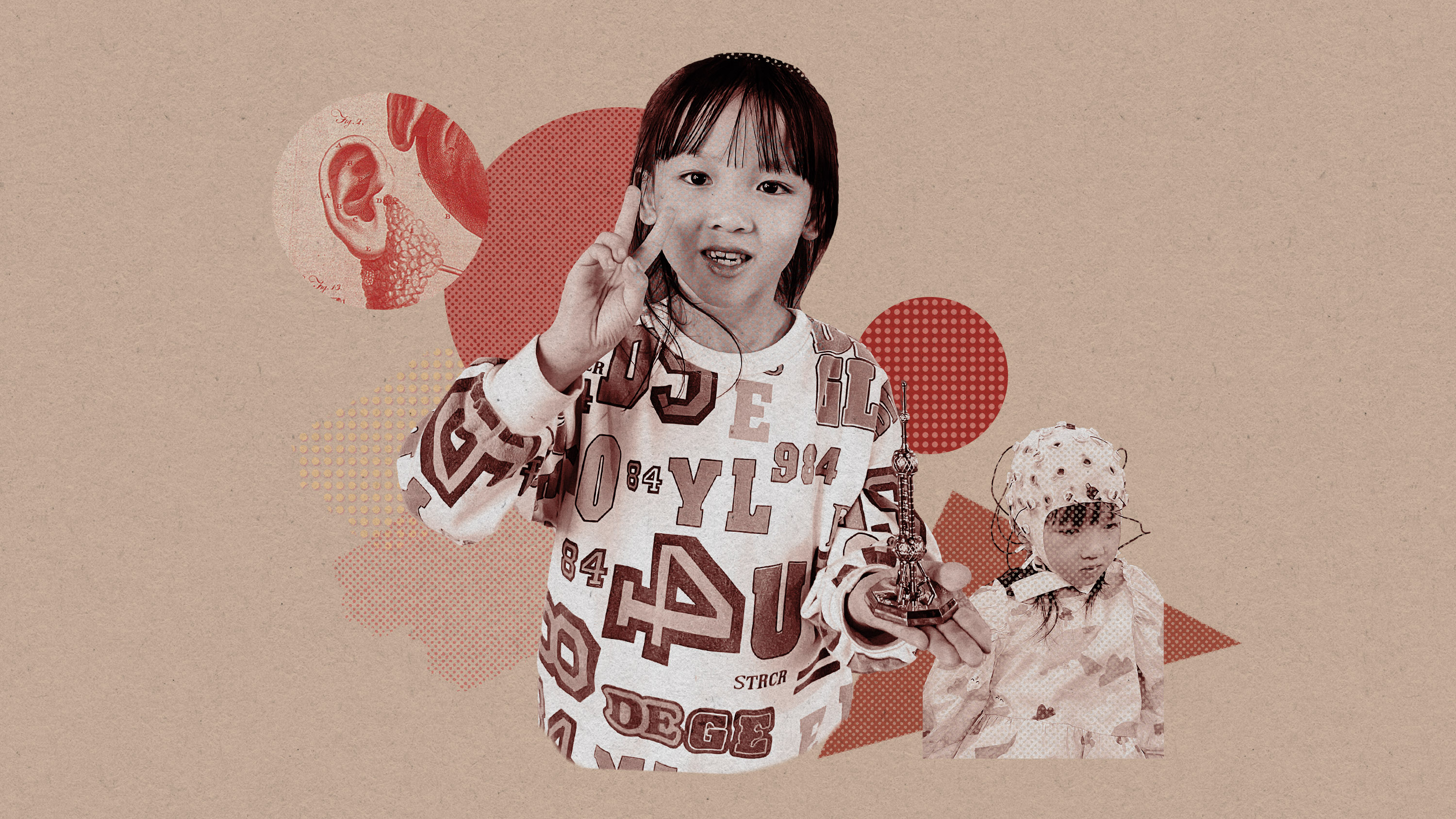Some deaf children in China can hear after gene treatment
After gene therapy, Yiyi can hear her mother and dance to the music. But why is it so noisy at night?By
October 27, 2023

Stephanie Arnett/MITTR | Courtesy Photos
Here’s the easy game Li Xincheng has been playing at home. Her mother says a few words. Then the six-year-old, nicknamed Yiyi, repeats what she heard.
“Clouds, one by one, blossomed in the mountains,” says her mother, Qin Lixue, while covering her mouth so Yiyi can’t read her lips.
“Clouds, one, one, blossomed in big mountains” Yiyi replies.
It’s hard to believe that Yiyi was born entirely deaf.
But this year her family, who live in a high-rise block in the city of Dongguan, enrolled her in a study of a new type of gene therapy. During the procedure, doctors used a virus to add replacement DNA to the cells in Yiyi’s inner ear that pick up vibrations, allowing them to transmit sound to her brain.
In less than a month, her mother says, she was hearing with the treated ear for the first time. Yiyi can’t explain exactly what it’s like in words, but now, at school, she can hear the chime that ends naptime. She used to have to wait for the other kids to tell her.
Qin Lixue demonstrates how her deaf 6-year-old daughter Yiyi can hear after an experimental gene therapy treatment.
QIN LIXUE
Yiyi is one of several deaf children who scientists in China say are the first people ever to have their natural hearing pathway restored in a dramatic new demonstration of the possibilities of gene therapy. The feat is even more remarkable because until now, no drug of any kind has ever been able to improve hearing.
“We were careful, and a little bit nervous, because it was the first in the world,” says Yilai Shu, a surgeon and scientist at Fudan University in Shanghai who is leading the experiment. His team began the treatments last December, and before that he spent years developing the techniques involved, testing gene injections in countless mice and guinea pigs. “That was my project: How do we deliver this to the inner ear?” Shu says.
In the US and Europe, gene therapy has been notching successes, including restoring limited vision to people with genetic causes of blindness. Now Shu’s study, in which as many as 10 kids have been enrolled, may be remembered as China’s first domestic gene-therapy breakthrough, as well the most dramatic restoration of a lost sense yet achieved.
“Before the treatment, if you put them in a movie theater with the loudest sound, they wouldn’t hear it,” says Zheng-Yi Chen, an associate professor at Mass Eye and Ear, a Harvard-affiliated hospital in Boston, who helped design and plan the study. “Now they can hear close to normal speech, and one can hear a whisper.”
A huge step
Today, Shu is scheduled to present data on the first five children he treated at a meeting of the European Society for Gene and Cell Therapy in Brussels, Belgium. Four of them gained hearing in the treated ear, but one did not, possibly because of preexisting immunity to the type of virus used to convey new DNA into the body.“Any hearing improvement I would call a total win, and getting patients to moderate hearing loss is remarkable,” says Lawrence Lustig, a physician at Columbia University who runs studies of hearing treatments. “As a first step, this is huge.”
The new treatment will not help everyone who is deaf. It applies only to one specific cause of deafness at birth: a defect in a gene that produces a protein called otoferlin. The inner ear contains about 16,000 hair cells, so called because they have comblike extensions that vibrate to different frequencies of sound. Without otoferlin, these cells can’t transmit the chemicals that relay information to the brain.
“These patients basically don’t have a signal coming from the hair cells,” says Chen.
------------------------------------------------

Some deaf children in China can hear after gene treatment
After gene therapy, Yiyi can hear her mother and dance to the music. But why is it so noisy at night?
